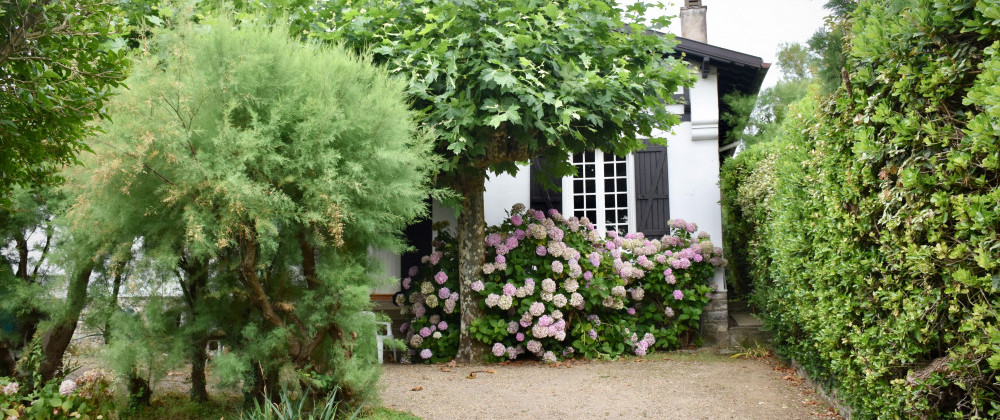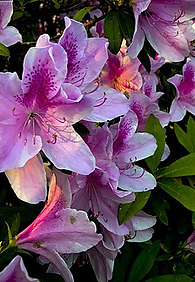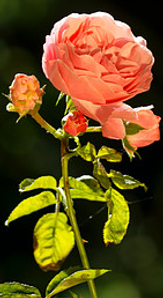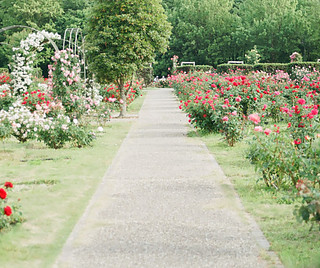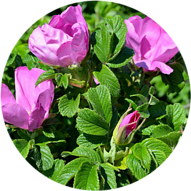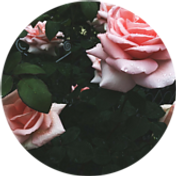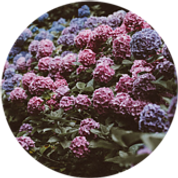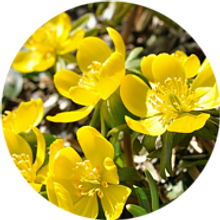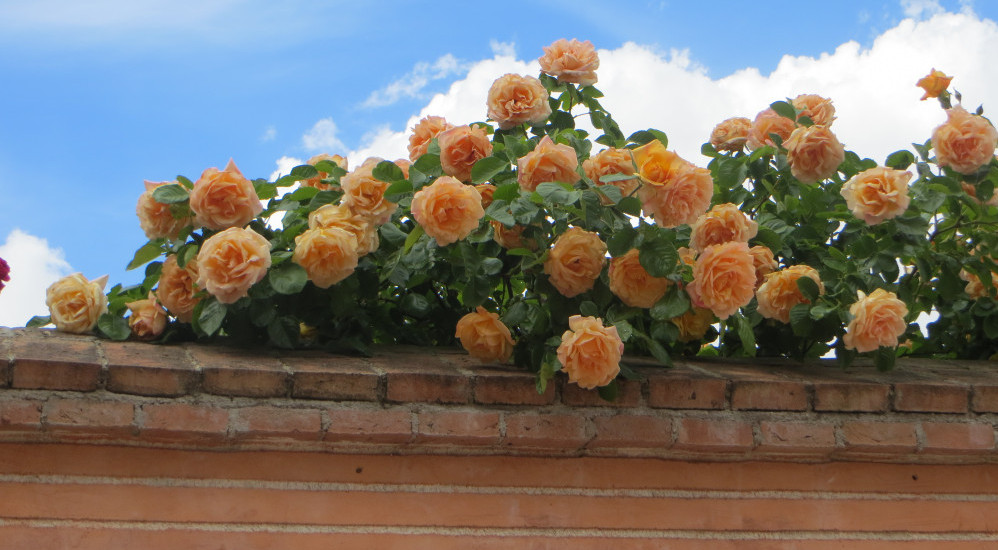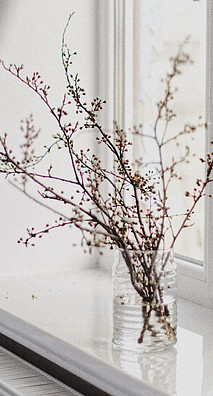Shrubs add another dimension to your garden. They not only enhance and complement what you already have, but they add form, beauty, interest, and everlasting color throughout the summer. Another plus is that bushes will continue to grow year in and year out. With just a little care, you could have flowering bushes that bloom all summer long. Here are a few things to consider not only when purchasing bushes, but also when deciding where to plant them and how best to showcase their beauty.
(Some of the links within this post are affiliate links on which I receive a small compensation from the sale of certain items.)
(As an Amazon Associate I earn from qualifying purchases.)
Kinds of Flowering Bushes
There are many things to consider when purchasing flowering shrubs.
What Type of Shrub Do You Prefer?
-
deciduous – a shrub that has a broadleaf and sheds its leaves each season (ex: rose of sharon)
-
evergreen – a shrub that has a broadleaf and does not shed its leaves each season (ex: azalea, rhododendron)
-
woody – a plant that produces wood for its structural limbs; they have strong, brown barked stems
-
herbaceous – a plant that has no persistent woody structure above the ground; they have flexible stems and are usually green
Natural Requirements
When considering bushes, think about the following items.
-
light requirements – Does the plant prefer full sun, partial sun, or shade?
-
size/height – a bush can grow up to 25-30 feet (cherry laurel) or as short as a couple of feet Width: some shrubs spread to 18 – 20 feet (cherry laurel)
-
water requirements – Most shrubs when first planted will need watering at least twice a week depending on the rainfall for that season. Once they are established (usually after a couple of years) most will survive on seasonal rainfall, however regular watering is a must during a drought. Some shrubs require no extra water at all if it is a desert shrub (agave shrubs).
-
thorns – Does the shrub have thorns? This is a consideration if you have young children and/or pets that like to play in the garden.
-
bloom time – Is it a spring blooming shrub, summer blooming, fall blooming or a variety of these?
-
leaf color – If it is an evergreen, what is the color of its leaves; light green, hunter green, variegated (multi-colored)?
-
bark tendency – Is it multi-colored, soft, rough, peeling? All these items will add visual interest throughout the year.
-
pest and animal tendencies – Does it attract insects and/or animals?
-
soil requirements – sandy; loamy; mixture of the two
Other Considerations
Here are a few more thoughts regarding shrubs.
-
shape – Does it grow tall and thin; is it round and plump; is it cone like or free forming?
-
growth speed – Some shrubs grow rapidly (crepe myrtles will add up to 3 feet of growth each year depending on the variety) others are slow growers.
-
trimming/pruning – Are they fast growers in width and height, if they are they will need to be trimmed every year or so (ex: burning bush). For more on pruning, refer to Spring Gardening Tips For Beginners at the pruning section.
-
creepers – Does the bush have tendrils that twine around a wall or wooden feature to help it climb up a structure?
Some Summer Beauties
Once you have thought about the items I have discussed so far, here are some suggestions for flowering shrubs that bloom all summer.
Shrub Roses and other beautifully blossoming shrubs
There are many kinds of rose bushes and many bloom all summer long. Some advantages to growing rose shrubs are they will usually bloom into the fall; they can be planted at any time during the summer season as long as you water it at least twice a week especially during droughts; and many are naturally resistant to disease
Here is a list of more flowering bushes that bloom all summer long.
- Mock Orange – Snow White Sensation variety
- Bluebeard – small; grows to only 2 to 3 feet
- Viburnum – all year beauty with flowers in the spring, pretty foliage in the fall, and berries in the winter
- Crepe Myrtle – come in bush and tree varieties; bloom in summer and some varieties bloom in the late summer, early fall
- Summersweet – attracts hummingbirds and butterflies
- Weigela – blooms from mid to late summer and attracts hummingbirds and butterflies
- Spirea – mid summer to late summer varieties
Where To Plant Shrubs
There are many places to plant shrubs. Remember, though, the odd number rule. Use 1, 3, 5, etc. number of shrubs.
You can plant a bush in solitude as a focus of attention called a specimen shrub. If you do this choose an unusual shrub with distinct characteristics. Some distinct characteristics could be coloring of flowers and/or bark, the flow of the bush, the unusual form, the way it attracts butterflies or hummingbirds. A specimen plant should entice you into smelling it or watching it engage with nature….something that makes it unique.
Using as Barriers
You could use shrubs as a barrier or perhaps as a division between your yard and your neighbor’s. Or use them to hide an unsightly area.
Another place to plant shrubs would be in the back of a perennial garden. This would add a tiered look to your garden.
One other possibility is to group them together for a burst of color. Try buying the same bush but with different varieties. That will add visual interest to your garden. They do not need to be in a line. Instead try zig-zagging them.
Some Final Thoughts
I enjoy having fresh flowers in my house. You don’t always need to buy them from a florist or the floral department in your local grocery store. Instead, cut stems from bushes and add them to a tall vase. Remember to cut them on an angle to allow for a larger surface exposure to water. Also, if it is a woody stem like lilacs, crush the bottom of the stem with a mallet or a heavy metal knife. This again allows for more water to enter the stem.
A simple recipe of 1 quart water + 2 tablespoons lemon juice + 1 tablespoon sugar + 1/2 teaspoon bleach added to the vase will help prevent the growth of algae and provide nutrients to preserve cut flowers. Cuttings from bushes make a statement set alone next to a hearth, or in the corner of a dining room, or as an accent on a sideboard in your living room.
In March when things are still gloomy outside, try cutting stems of forsythia or any other flowering bush you may have on your property and set them in a vase of water. The warmth of your home will help force the buds to bloom sooner than if they were outside. You do need to be patient; if you wait, they will come!
Are You Ready To Plant Some Shrubs?
I hope I have covered many of the questions you may have regarding summer flowering shrubs. If you have comments or questions, please leave them below and I’ll be sure to respond.
Happy Gardening!
Nina

